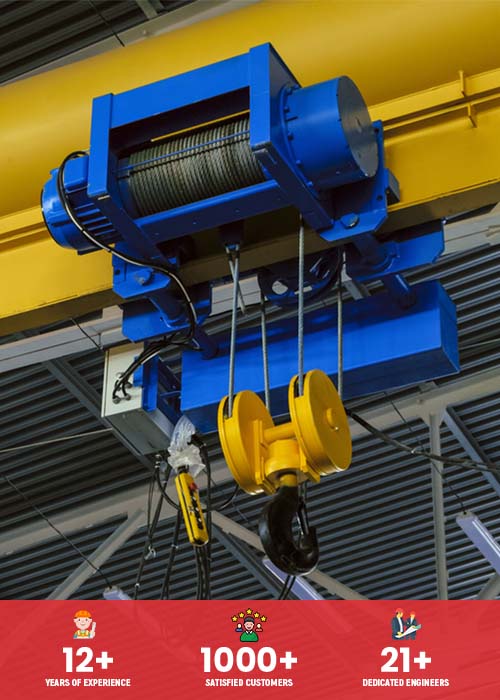Crane Collision Avoidance Systems- How It Reduces Accidents And Maintenance Costs?
Have you ever seen those huge cranes that are used in construction? They’re pretty impressive, but there’s one thing that’s even more impressive- their ability to avoid accidents. Yes, crane collision avoidance systems are real, which is done by eot crane manufacturers in India, and they’re not just for safety purposes. They can also help reduce maintenance costs. Keep reading to find out how!
What crane collision avoidance systems are and how they work
Modern crane collision avoidance systems are designed to eliminate the potential for workplace accidents caused by collisions between cranes and other objects. These systems use sensors and sophisticated algorithms to detect objects or people in the path of a crane, alerting operators when they might be in danger. This allows operators to take action before an accident occurs, quickly altering their travel if necessary.
These sensors can range from lasers and radar to cameras with artificial intelligence (AI) capabilities that can recognize movement or shapes that may pose a risk. The data collected is used by the system’s algorithms to identify any potentially hazardous situations. When the system detects an object or person in the crane’s path, it will alarm and display visual warnings on the operator’s console. This allows the operator to stop the crane or take evasive action before it is too late.
In addition to warning operators of potential collisions, these systems can also control other aspects of crane operation, such as speed and load capacity. By monitoring the input from various sensors, the system can ensure that cranes are operated within their safe limits and prevent overloading or other unsafe conditions. These systems make it easier for operators to comply with safety regulations while ensuring maximum productivity.
How can they help to prevent accidents in the workplace?
Crane collision avoidance systems can significantly reduce the risk of workplace accidents by providing an early warning system that alerts operators to potential hazards. These systems use a variety of sensors and sophisticated algorithms to detect objects or people in the path of a crane, allowing operators to quickly alter their course before an accident occurs.
Additionally, these systems can monitor other aspects of crane operation, such as speed and load capacity, ensuring that cranes are operated within safe limits and preventing potentially hazardous situations. Ultimately, implementing a crane collision avoidance system is essential for protecting workers and equipment from on-site accidents while increasing efficiency and production levels.
By investing in the latest technology and following safety protocols, facilities can ensure that everyone is kept safe with minimal disruption to production. Crane collision avoidance systems provide an invaluable layer of protection and peace of mind for operators and managers alike, making them a must-have in any workplace that uses heavy machinery.
How can they help to reduce maintenance costs?
Using crane collision avoidance systems can help reduce maintenance costs by providing operators with an early warning system that alerts them to potential hazards. This allows operators to take action before any damage is done, quickly altering their travel if necessary.
Ultimately, crane collision avoidance systems are a cost-effective way for businesses to keep up with safety regulations while ensuring maximum efficiency. They help protect workers, equipment, and budgets, making them a must-have for any workplace that utilizes heavy machinery.
Some of the benefits of using crane collision avoidance systems
Crane collision avoidance systems are becoming increasingly popular in construction sites and other locations where large objects must be handled precisely. Crane operators rely on these systems to ensure the safety of their work environment and bystanders. They can also maximize efficiency and productivity by avoiding potential collisions or other risks. Here are some of the key benefits of using a crane collision avoidance system:
1. Increased Safety
The most important benefit is enhanced safety for everyone involved in crane operations, including operators, bystanders, and anyone nearby. By preventing collisions between cranes and other objects, the risk of injury or death is greatly reduced.
2. Improved Productivity
A good crane collision avoidance system will not only minimize the risk of accidents, but it can also help to maximize productivity. By avoiding collisions, crane operators can move faster and more efficiently. This allows them to complete their tasks in less time, resulting in increased productivity.
3. Cost Savings
Installing a crane collision avoidance system may require some upfront costs, but these will be offset by the savings achieved through increased safety and efficiency. In some cases, insurance companies may even offer discounts on policies for businesses that install this type of system.
4. Enhanced Compliance
By providing a safer work environment and reducing the chances of collisions or other mishaps, crane collision avoidance systems can also help businesses comply with local regulations and standards. This is particularly important for businesses that need to operate in regulated areas.
Ultimately, a good crane collision avoidance system can help improve safety and productivity while saving money and helping businesses stay compliant. Investing in one of these systems is a smart move for any business that needs to handle large objects with precision.



